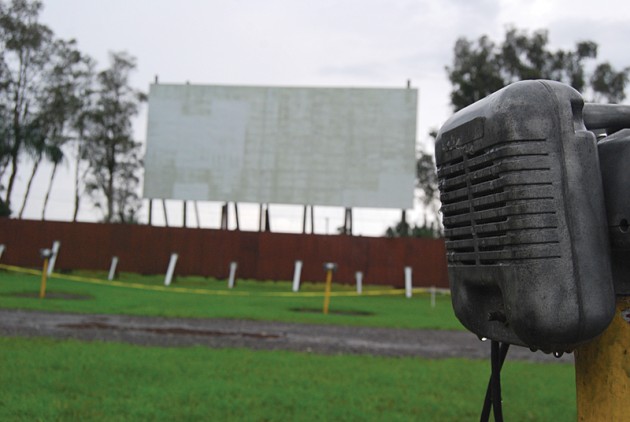Drive-ins drive on

What started as Richard Hollingshead Jr.’s theater tests in the driveway of his Camden, N.J. home in 1932 soon spiraled into an American pastime — hanging out at the drive-in.
Though a night at the drive-in theater may seem like a relic of the ’50s and ’60s — when catching a movie from the comfort of one’s vehicle was popularized — technological advances may not have forced the drive-in to go the way of the 8-track.
Ruth McPhee, who manages Fun-Lan Drive-In Theatre in Tampa, said the theater sees a variety of customers from senior citizens to college students.
“They enjoy the open environment and the freedom to talk to their friends — it gives off the feeling of a park more than a movie theater,” she said.
McPhee said the drive-in is usually busiest “around summertime when the kids get out of school, but the theater hasn’t seen much of a drop-off this year due to their good movie selections.”
According to the theater’s Web site, Fun-Lan opened in 1950 with its first feature, I was a Male War Bride. Admission cost 48 cents per person.
The drive-in has seen many changes. The movie’s audio is no longer heard from stationary speakers provided by the theater. Instead, moviegoers tune in to a corresponding FM radio station on their car stereo.
The business side has also changed. Statistics from driveintheater.com, a site dedicated to the history of the drive-in, show that from 1958 to 1987 the number of drive-ins in America dropped from more than 4,000 to about 900. According to The Boston Globe, only 432 drive-in screens are operating in the U.S. today.
As a result, most drive-in theaters double as storage sites or flea markets, and have increased the number of screens to attract more customers. Many also have playgrounds or concession stands.
Of these remaining establishments, Ft. Lauderdale’s Swap Shop is the world’s largest drive-in movie theater and daily flea market. The business attracts more than 12 million shoppers a year and is second only to Disney World as Florida’s largest tourist attraction, according to the shop’s Web site. Its originally named Thunderbird Drive-In, has 14 screens.
Ron Drenning, a freshman medical technology major, grew up in Ft. Lauderdale and frequented the Swap Shop.
“(The other movie screens) were sometimes distracting, but it is interesting being able to see other movies,” he said. “If you’re stuck watching Sex and the City with your girlfriend, you can always glance over and see what The Hulk’s doing.”
Establishments like Fun-Lan and Swap Shop prove that there is still an audience for the drive-in. When people get sick of Netflix and HBO, they can kick it old school — even if they’re too young to get all nostalgic about it.





